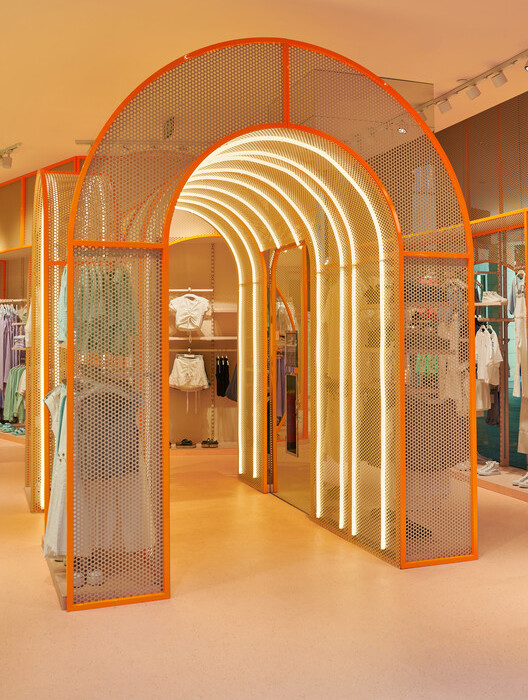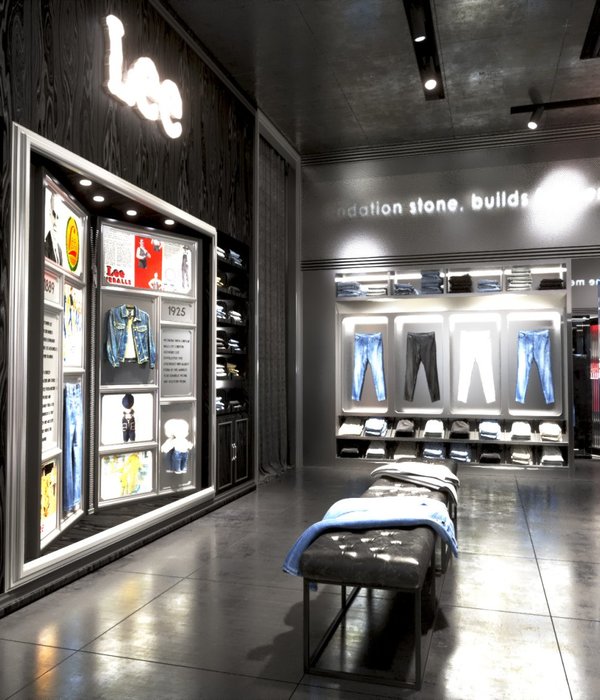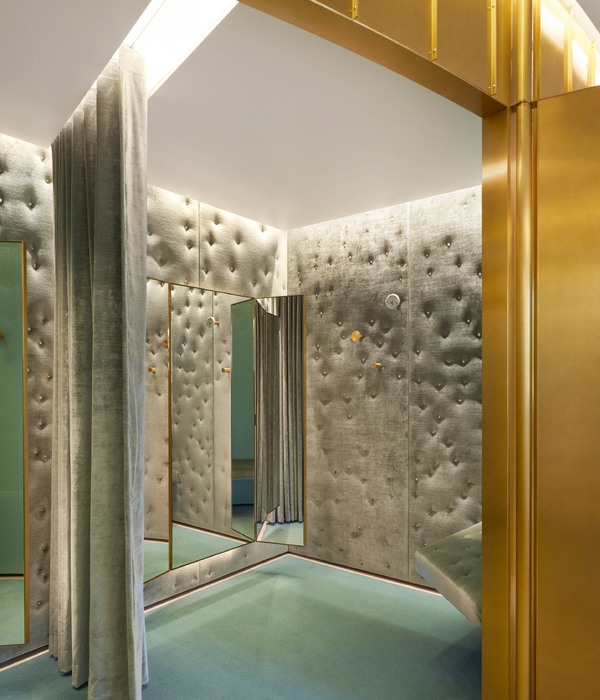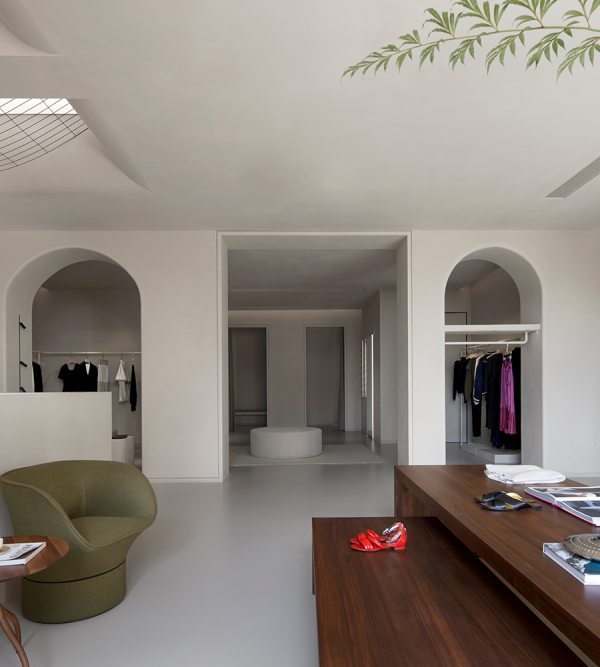伦敦设计工作室JamesPlumb将手工编织的芦苇架子与朴实的大麻色调混合在一起,为这家位于剑桥的Aesop 商店创造了内部环境,该商店的灵感来自附近的剑河。根据这个澳大利亚护肤品和化妆品品牌的说法,位于该市三一街的Aesop商店被设想为一个 "编织的阅览室",提供了一个购物和翻阅书籍的地方。
London design studio JamesPlumb blended handwoven bulrush shelves with earthy hemp accents to create the interiors for this Aesop store in Cambridge, which takes cues from the nearby River Cam.Located on the city's Trinity Street, the Aesop outlet was conceived as a "woven reading room" that provides a place to shop and leaf through books, according to the Australian skincare and cosmetics brand.
该店的店面被漆成了深棕色,并以破旧的皮革为灵感,这与剑桥大学的学术历史有关,与古董书的装订相呼应。在店内,一个弧形和板条的窗边座位可以作为盆栽天竺葵的基座,它映衬着商店光线充足、临街的房间,其墙面为泥土色系。
The store's understated shopfront is painted a dark brown hue informed by well-worn leather, which nods to antique book bindings in reference to Cambridge's history of academia. Inside, a curved and slatted window seat doubles as a plinth for potted pelargoniums that frame the store's light-filled, street-facing room featuring earthy-toned walls.
这个空间被超大的、有质感的架子所定义,这些架子是由淡水芦苇植物制作而成的,这些植物是在当地采购的,由Rush Matters公司的Rush织工Felicity Irons手工编织。这个房间的其他架子是由附近的Margent农场种植的大麻制成的,它与生物树脂相结合,形成了展示各种Aesop产品的几何橱柜板,以及一个大水槽。
This space is defined by oversized, textured shelves created from freshwater bulrush plants – locally sourced and handwoven by rush weaver Felicity Irons of Rush Matters.Other shelving in this room is made from hemp grown on the nearby Margent Farm, which was combined with bio-resin to form geometric slabs of cabinetry that display various Aesop products, as well as a large sink.
在商店的后面,另一个房间的墙壁上涂有比面向街道空间更深的色调,这是从芦苇的棕色花朵中得到的启示。原始的十九世纪抛光木质地板也在这两个房间里出现,旨在呼应该商店对当地历史的强调。
At the back of the store, another room features walls painted in a darker hue than the street-facing space, which takes cues from the brown flowers of bulrush plants.Original nineteenth-century polished wooden floorboards also feature in both rooms and intend to echo the outlet's emphasis on local history.
Interiors:JamesPlumb
Photos:OskarProctor
Words:倩倩
{{item.text_origin}}












